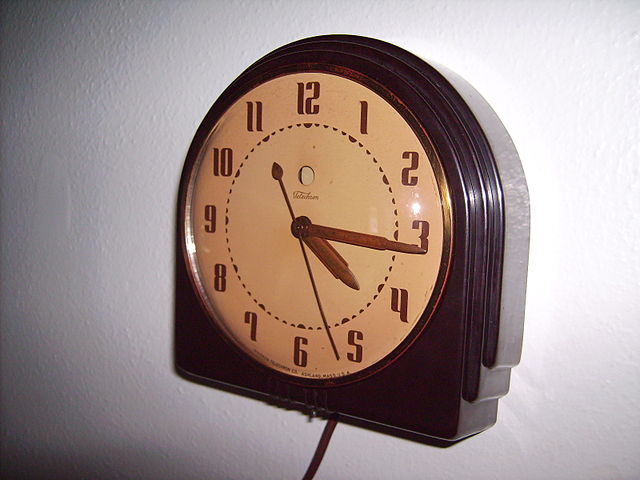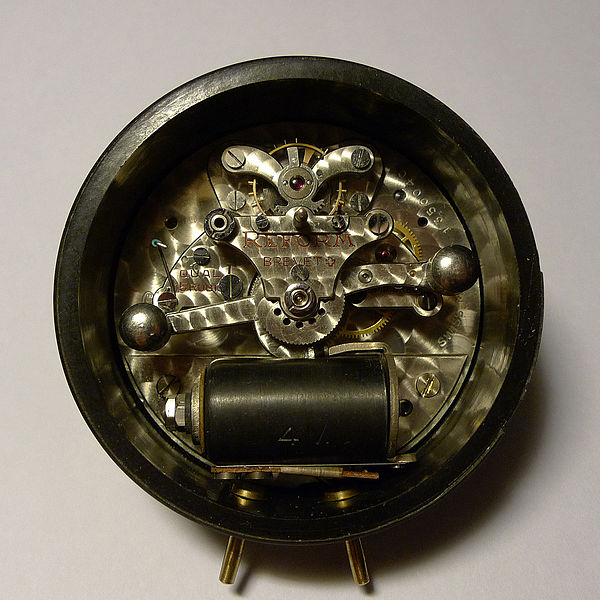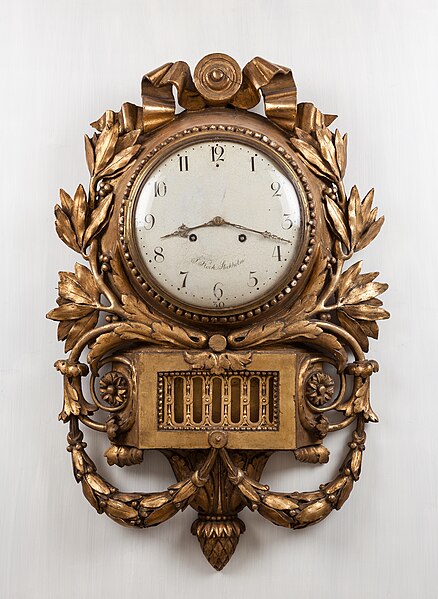An electric clock is a clock that is powered by electricity, as opposed to a mechanical clock which is powered by a hanging weight or a mainspring. The term is often applied to the electrically powered mechanical clocks that were used before quartz clocks were introduced in the 1980s. The first experimental electric clocks were constructed around the 1840s, but they were not widely manufactured until mains electric power became available in the 1890s. In the 1930s, the synchronous electric clock replaced mechanical clocks as the most widely used type of clock.
Telechron synchronous electric clock manufactured around 1940. By 1940, the synchronous clock became the most common type of clock in the United States
Electromechanical self-winding clock movement from Switzerland.
One of Alexander Bain's early electromagnetic clocks, from the 1840s
Gents' of Leicester Pulsynetic, C40A, Waiting Train, Turret Clock (1940s/50?). Photographed in the Ministers' Building (The Secretariat), Yangon.
A clock or chronometer is a device that measures and displays time. The clock is one of the oldest human inventions, meeting the need to measure intervals of time shorter than the natural units such as the day, the lunar month, and the year. Devices operating on several physical processes have been used over the millennia.
An analog pendulum clock made around 18th century
Casio F-91W digital watch, one of the most popular watches ever
Simple horizontal sundial
The flow of sand in an hourglass can be used to keep track of elapsed time.








